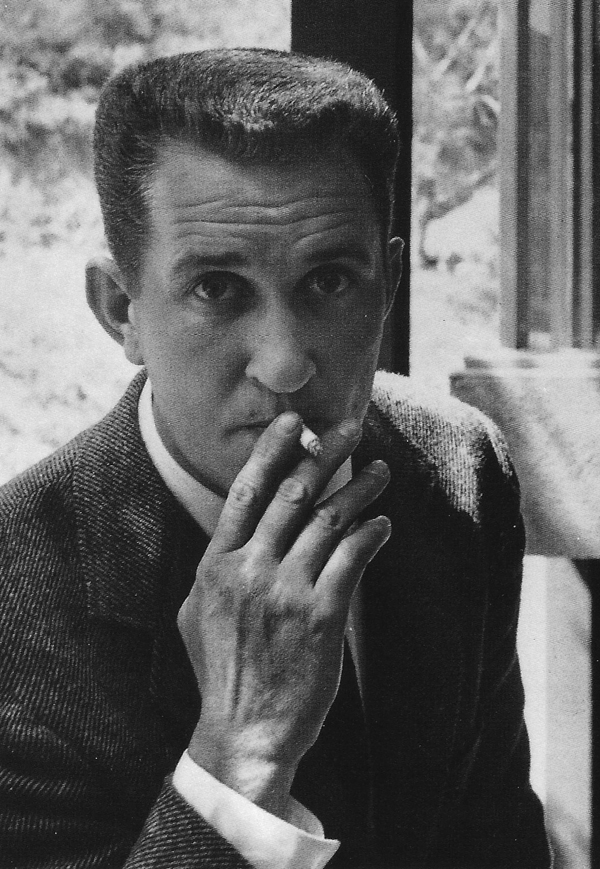Craig Ellwood

Craig Ellwood (1922-1992)
Craig Ellwood perhaps was as well known for his personal life as his architecture. He married four times, had a penchant for exotic sports cars, and was a natural in public relations.
Born Jon Nelson Burke in 1922 in Clarendon, Texas, he coined “Craig Ellwood” as the name of a construction company he formed after World War II with his brother and two friends. The business lasted only two years, but Ellwood kept the company name, legally taking it as his own in 1948.
Ellwood’s family settled in Los Angeles when he was a teenager (still known as Jon Burke). He was elected class president at Belmont High School. After graduating, he served in the U.S. Army Air Corps until 1946. He had acting ambitions and dabbled in modeling and PR before entering the world of architecture.
After closing the construction business, Ellwood worked as a cost estimator for the contracting firm Lamport Cofer Salzman (LCS), which built several Case Study Houses. Through LCS, Ellwood met John Entenza, founder of the Case Study House program and editor of Arts & Architecture magazine. This connection would prove pivotal to his success as an architect.
Ellwood took night courses in structural engineering at UCLA but never earned a formal degree. He had a natural brilliance for architecture and design, profoundly understanding the relationship of horizontal and vertical planes and the merits of prefabrication. He taught and lectured at universities including USC, Cal-Poly Pomona, and Yale.
He established Craig Ellwood Associates in 1949 and in 1951 was invited by Entenza to participate in the Case Study House Program. Ellwood designed three houses for the program (#16, #17, and #18). Completed in 1952 and considered by many as one of the most important postwar California homes, #16 is the only one of the three that remains intact.
Ellwood gained many commissions as result of the Case Study House program, and he designed many noteworthy Modern homes throughout Los Angeles. The firm’s commercial projects included office towers and the Bridge Building for Art Center College for Design in Pasadena—considered by many as his farewell project.
Craig Ellwood Associates stayed in practice until Ellwood’s retirement in 1977, when he moved to Italy to pursue painting. He died there in 1992.
Craig Ellwood stated his architectural philosophy in the March 1976 issue of L.A. Architect:
«Architecture, by its own nature, must certainly be more than an expression of an idea. Art in architecture is not arbitrary stylism or ethereal symbolism, but rather the extent to which a building can transcend from the measurable into the immeasurable. The extent to which a building can evoke profound emotion. The extent to which a building can spiritually uplift and inspire man while simultaneously reflecting the logic or the technique which alone can convey its validity to exist.»
Architecture can trigger emotion. Just look at how designed memorials can trigger emotions like pride, sadness, or gratitude. Similarly, other building types can yield surprise or can even mellow one’s mood. It all becomes a matter of how a particular place is designed to trigger for an emotional response in its occupants. Emotion in architecture can often be linked to how well an architecture exudes a “sense of place” where the emotion experienced of a particular architecture can be shaped by its “sense of place”. Often, “sense of place” can help an architecture take on a type of personality — and this personality can serve to trigger emotion in its building occupants because it connects with them.






